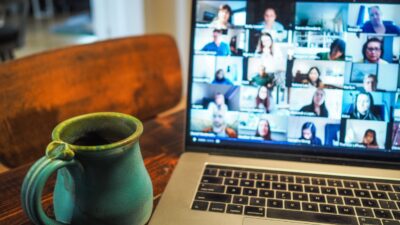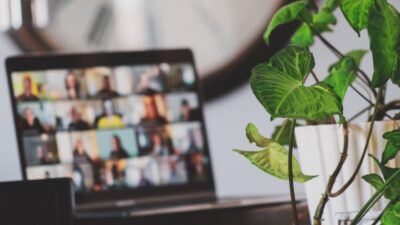Massimo Garbuio

Strategy planning 2021: four areas to test
Assuming a viable vaccine makes a staggered entrance in 2021, organisations will need to factor its impact into planning scenarios. Some behaviours started as a result of COVID will stay, some will be become more pronounced and some matters will reset to the pre-COVID status quo.
COVID-19 has changed strategy discussion at board level: transcripts of conference calls reveal more intense conversations combing immediate challenges and also future-focused objectives. The quality of those conversations will determine which companies will thrive, the ones that will adapt (poorly) and the ones that will struggle.
At the October Q4 earnings conference call, Apple CEO Tim Cook, said “Apple stayed relentlessly focused on what we do best, seeing in every obstacle an opportunity to do something new, something creative, something better on behalf of our customers.” He goes on to highlight how,
“There are worse things for a company whose business is innovation than having to periodically do just about everything in an entirely new way… Working from kitchen tables and bedrooms, in distanced office settings and reworked labs and manufacturing facilities, the team rebuilt every part of the plane while it was midair, and the results speak for themselves.”
Apple pulled through for Q4, ending the #fiscal year with an impressive $64.7 billion quarter. Here's how it compares to previous financial results. https://t.co/oHW5ib59HI pic.twitter.com/gXXyAikDR1
— AppleInsider (@appleinsider) October 31, 2020
A handy ‘how to’ guide for predicting the future
The ability to make predictions about the future is going to be crucial. These are fuelled from what we call abductive thinking, thinking about both questioning long standing assumptions and future visions in a systematic way. Being open to criticism and encouraging contradictory information is becoming more important and will reward the individuals and companies that will thrive after COVID.
Let’s have a look at four critical areas to put under the microscope. This is the conversation starter.
1. Start with the big picture: the megatrends
Sydney Business Insights has collected a wealth of resources on the six fundamental forces changing the world of business. These are impactful technology, demographic change, rapid urbanisation, amplified individuals, economic power shifts to climate and resource security. Ask yourself, as a result of a pandemic, which ones are going to stay, which ones will be amplified and which will have a reduced impact? And especially – have any new trends emerged and are they here to stay?
2. Back to scenario planning, in an agile way
We don’t know how the uncertainty is going to be resolved, there are too many variables to predict and the information out there is a bit messy. Are e-commerce and omnichannel here to stay? What about working from home or cashless societies? When will international and national mobility return?
Scenario planning is back. You will need to juggle multiple scenarios. There is no clear future nor a linear growth path, if ever there was one, for your industry. Devise 3-5 scenarios and keep adding information over the following weeks and months. What information is going to have a long term impact? The challenge here is to screen out the fake from the real, in a world in which fake news and biased account of the reality are prevailing. Once you have the critical scenarios, design small experiments you can do today to uncover the unknowns in each scenario, so week by week you can progress to weeding out what is unlikely to happen.
3. Back to the (economics) basics
The basics are here to stay from network effects, to transaction costs, opportunity costs and the use of incentives to motivate behaviors. They have been tested in different scenarios and have stood the test of time. Not just in economics terms, but also accounting for our emotions on the way we make decisions or crave a sense of belonging. Go back to these long-standing principles as you think about how to take advantage of new trends and enduring behaviors. And don’t forget you need to understand statistics and probabilities and critically think about infection rates, mortality rates, and compare these not only with other diseases but also with what does not make the news such as the number of people who don’t have access to non-emergency treatments anymore.
4. Finish by thinking holistic changes not incremental moves to digital
Strategy is now asking for a major overhaul of your business model, not just incremental improvements. Moving some of your non-digital offerings to digital offering or allowing employees to work from home for a few more months is going to help you survive this pandemic crisis, but it is not going to dramatically change the economics of your business. You might have saved some costs but there are companies that are truly changing the way they do business, the way they partner with other organisations, the way they think about the customer journey in a truly new and innovative way.
Happy days ahead
If you are looking for a digital transformation, now more than ever that is easy to do. For many companies hiring higher caliber talent is also easier and cheaper to do. Happy days for the companies that were doing well before COVID but struggled to implement innovative ideas and attract the right talent. It’s now your time.
Read Massimo’s latest book “Seeds of Strategic Thinking“ on Amazon Kindle.
This is part of a series of insights related to Coronavirus (COVID-19) and its impact on business.
Dr Massimo Garbuio is an Associate Professor in Entrepreneurship at the University of Sydney. He's passionate about helping students and business leaders become master strategists.
Share
We believe in open and honest access to knowledge. We use a Creative Commons Attribution NoDerivatives licence for our articles and podcasts, so you can republish them for free, online or in print.





